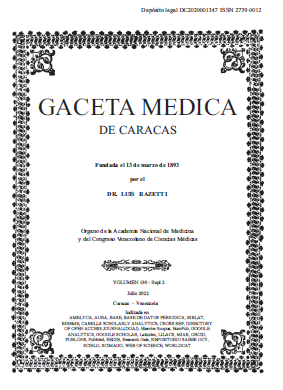Clinical and paraclinical indicators to evaluate the prognosis of COVID-19: Lessons from a case
Contenido principal del artículo
Resumen
The coronavirus is a disease that affects the respiratory system, it comes from the SARS-CoV-2 virus that belongs to the Beta coronavirus group and is currently the cause of a high mortality rate worldwide. The diagnosis through images and oropharyngeal and nasopharyngeal tests helps in the recognition of this respiratory condition. We present a clinical case of a 74-year-old patient with diarrhea, dyspnea, and cough, establishing the diagnosis of COVID-19. We found clinical and paraclinical parameters such as advanced age, history of arterial hypertension, dyspnea, low oxygen saturation, increased azoados, increased hepatic enzymes (AST), leukocytosis, lymphopenia, neutrophilia, increased PCR and procalcitonin, plaquetopenia, increased lactic dehydrogenase, increased ferritin, pulmonary infiltrates with a frosted glass appearance evidenced in the X-ray and CT scan of the chest; all these determining factors of unfavorable prognosis according to current scientific evidence. The results of the case analysis are discussed.
Descargas
Detalles del artículo

Esta obra está bajo una licencia internacional Creative Commons Atribución-NoComercial 4.0.
